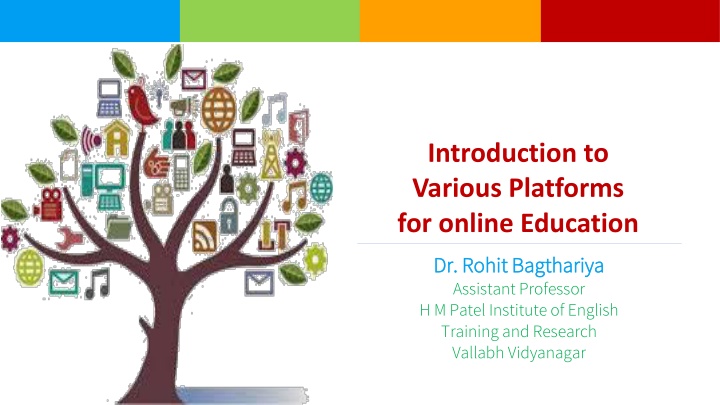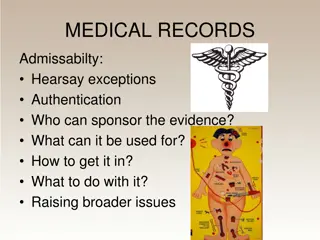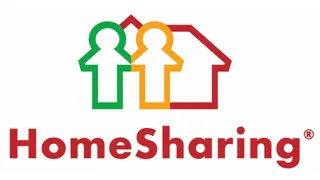
Introduction to Online Education Platforms
Explore the world of online education platforms with this comprehensive guide by Dr. Rohit Bagthariya. Learn about Learning Management Systems (LMS), synchronous and asynchronous e-learning, virtual classrooms, and tools for online instruction. Adapt to the new era of virtual education and enhance learning environments using ICT technologies.
Download Presentation

Please find below an Image/Link to download the presentation.
The content on the website is provided AS IS for your information and personal use only. It may not be sold, licensed, or shared on other websites without obtaining consent from the author. If you encounter any issues during the download, it is possible that the publisher has removed the file from their server.
You are allowed to download the files provided on this website for personal or commercial use, subject to the condition that they are used lawfully. All files are the property of their respective owners.
The content on the website is provided AS IS for your information and personal use only. It may not be sold, licensed, or shared on other websites without obtaining consent from the author.
E N D
Presentation Transcript
Introduction to Various Platforms for online Education Dr. Dr. Rohit Rohit Bagthariya Bagthariya Assistant Professor H M Patel Institute of English Training and Research Vallabh Vidyanagar
At the end of this session you will be able to Define LMS Define the Synchronous e-learning Define the Asynchronous e-learning Define the Synchronous virtual classrooms Define the Asynchronous virtual classrooms Know the tools for the Synchronous e-learning Know the tools for Asynchronous e-learning
Introduction The technological revolution in information technology has led to rapid growth in all fields of knowledge making it an imperative requirement for educational institutions, universities and companies to benefit from this rapid development in ICT to improve learning environments as well as cope with the ever increasing demand for education and training. Further, the present situation of the Covid-19 lead us to the virtual education.
Learning Management System (LMS) LMS are an example of integrated software that could be used to help the faculty to implement and manage such classrooms (Papastergiou, 2006). LMS have been defined as learning management software that can provide a variety of tools for sharing and delivering different types of instructional materials, and facilitate tasks such as giving immediate feedback, student registration etc. (Mimirinis & Bhattacharya, 2007; Ozdamli, 2007).
Types of e-learning Synchronous e-learning Asynchronous e-learning Click on the model to interact
Synchronous e-learning This type of e-learning requires learners and instructors to communicate online at the same time from different places. For this reason this type of e-learning needs modern equipments and good network connection. However, it has the advantage of immediate feedback and live online interaction. To conduct the synchronous e-learning, there are a number of tools that could be used to conduct the synchronous e-learning; there are a number of tools that could be used such as video conferencing, audio conferencing, chat rooms, and white board (Mylott, 2008). Click on the model to interact
Asynchronous e-learning This type of e-learning does not require students and teachers to be online at the same time. The advantage of asynchronous e-learning is that the student will be able to choose the suitable time for him to access what he needs, and will allow him to do his learning at his own pace ( Sussman, 2006). On the other hand, with this type of e-learning students will be unable to get immediate feedback from the instructor and will be more isolated than synchronous e-learning. But as yet in both types of e- learning the students need to be motivated for learning in order to overcome the negative effects of the separation between from one another and from their instructor (Ellis, 2004). Click on the model to interact
Types of virtual classroom Synchronous virtual classroom Asynchronous virtual classroom Click on the model to interact
Synchronous virtual classroom Synchronous virtual classrooms are those which supported by software that enable the teacher and students to communicate online at the same time from different locations (Hrastinski, 2008). The software used in synchronous virtual classroom has many advantages that could facilitate the learning processes. One of the advantages is the possibility that the teacher and students can see each other during the lectures and during discussion times. Moreover, the fact that the students might be taken on a synchronous tour on different websites where the students can see the sites that have been browsed by the teacher could be an advantage. Click on the model to interact
Tools for the (A)synchronous e-learning Fully integrated with Office 365 MS Teams Conversation channels Google Meet Collaborate live in real time Integrate third-party applications quickly Jio Meet Students progress can be tracked Zoom Maintains gradebook Webex Access Teams across all of your devices
Tools for the Synchronous e-learning Free of Cost MS Teams Unlimited number of meetings Google Meet Live captioning during meetings Jio Meet Controls for meeting hosts Messaging with participants Zoom Screen sharing with participants Webex Compatible across devices
Tools for the Synchronous e-learning MS Teams Free of cost available across all platforms very simple interface Instant/Scheduled Meetings Allows 100 members to be on a group video call Google Meet Jio Meet Zoom Webex
Tools for the Synchronous e-learning MS Teams Join from anywhere on any device Built-in tools for screen sharing Google Meet Support for up to 100 video Jio Meet participants for Free Zoom Built-in recording and transcripts Team chat both for groups and one- Webex on-one messaging
Tools for the Synchronous e-learning Web and Video Conferencing MS Teams Webinars Google Meet Application/File Sharing Call Sharing Jio Meet Multimedia Content Sharing Zoom Conferencing Webex Chat and Brainstorming Tools
Asynchronous virtual classroom Asynchronous virtual classrooms are self-paced e-learning systems that enable students to review the instructional material and therefore interact with the course content via internet at the appropriate time and place. The main advantage of asynchronous virtual classroom is the flexibility in the time, where the learner could log on to asynchronous virtual classroom any time to send messages to the instructor or colleagues and review or download documents. It also gives the students enough time to contribute more thoughtfully as compared to synchronous classroom (Hrastinski, 2008). Click on the model to interact
Tools for the (A)synchronous e-learning Fully integrated with Office 365 MS Teams Conversation channels Collaborate live in real time Google Classroom Integrate third-party applications quickly Students progress can be tracked Maintains gradebook Moodle Access Teams across all of your devices
Tools for the Asynchronous e-learning Free of Cost MS Teams Accessible anywhere Students progress can be tracked Google Classroom Maintains gradebook Facilitates organization of content in Moodle digital form
Tools for the Asynchronous e-learning Customizable site design and layout MS Teams Bulk course creation and easy backup Manage user roles and permissions Google Classroom Multilingual capability Secure authentication and mass enrolment Moodle Detailed reporting and logs
Any Questions? Thank You!












